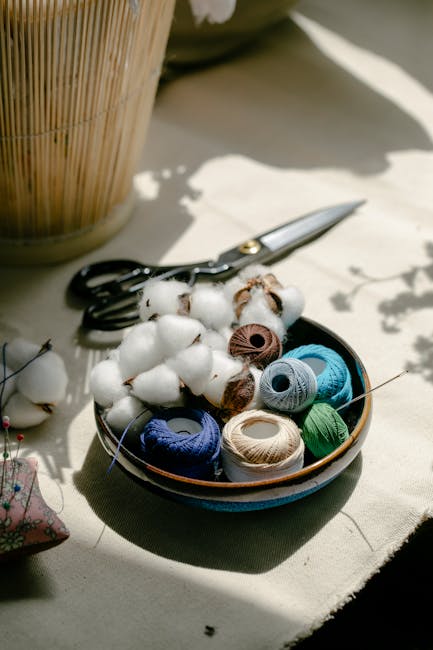How to Create an Eco-Friendly Garden: A Step-by-Step Guide for Beginners
How to Create an Eco-Friendly Garden: A Step-by-Step Guide for Beginners
As we venture further into the 21st century, our collective consciousness about the environment continues to grow. With the rising concerns about climate change, sustainability has become a buzzword in every aspect of our lives. One of the ways we can contribute to this global movement is by creating eco-friendly gardens.
An eco-friendly garden aims to work with nature, not against it. It promotes biodiversity, conservation, and the use of sustainable materials. If you're new to gardening, fret not! This step-by-step guide will take you from novice to green thumb in no time, helping you create your very own eco-friendly garden.
Step 1: Planning Your Garden

Before you get your hands dirty, you need to plan your garden. Consider the space you have available, the amount of sunlight it receives, and your local climate. Research on the types of plants that are native to your area and will thrive in your environment. This step will save you time, money, and frustration in the long run.

You should also think about the purpose of your garden. Do you want to grow vegetables? Flowers? Or perhaps you want a mix of both? Whatever your choice, remember that diversity is key in an eco-friendly garden. A variety of plants will attract a wider range of beneficial insects and birds, improving the overall health of your garden.
Step 2: Preparing the Soil
Healthy soil is the foundation of any successful garden. For an eco-friendly garden, consider using organic matter like compost or manure to improve the quality of your soil. These materials are not only excellent for your plants, but they also reduce waste and decrease the need for synthetic fertilizers.
Start a compost pile in your backyard, where you can dump kitchen scraps, lawn clippings, and other organic materials. Over time, this pile will decompose and turn into rich compost that you can use to feed your plants. If you're not able to compost at home, you can buy organic compost or manure from a local garden center.
Step 3: Choosing Your Plants
When it comes to choosing plants, opt for native species. These plants are adapted to the local climate and soil, making them more likely to thrive without the need for synthetic fertilizers or pesticides. Plus, they provide habitat and food for local wildlife, promoting biodiversity in your backyard.
You should also consider planting perennials. Unlike annuals, which you have to replant every year, perennials come back year after year, saving you time and resources. Some examples of perennial plants include lavender, sage, and echinacea.
Step 4: Planting Your Garden
Now that you've prepared your soil and chosen your plants, it's time to get planting. Remember to give your plants plenty of space to grow. Crowded plants not only compete for resources, but they're also more prone to disease and pest problems.
After planting, water your garden thoroughly. The best time to water is early in the morning or late in the evening, when the sun's rays are less intense. This helps prevent water evaporation, ensuring that your plants get the most out of every drop.
Step 5: Maintaining Your Garden
After your garden is established, you'll need to maintain it. One of the keys to an eco-friendly garden is to let it be as natural as possible. Avoid using synthetic fertilizers and pesticides, which can harm the environment and disrupt the natural balance of your garden.
Instead, opt for organic or homemade alternatives. For instance, you can use vinegar as a natural weed killer or introduce beneficial insects, like ladybugs and praying mantises, to control pests. Regularly monitor your plants for signs of disease or pest problems, so you can address them early on.
Step 6: Harvesting Your Garden
If you chose to grow fruits and vegetables, you’ll eventually reach the exciting stage of harvest. Knowing when to harvest your produce can ensure you get the most out of your plants. As a general rule, fruits and vegetables are ready to harvest when they reach their full color and size.
Remember, the more you harvest, the more your plants will produce. So don't be shy about picking those tomatoes, cucumbers, or whatever else you decided to grow in your eco-friendly garden.
Step 7: Looking Ahead
Creating an eco-friendly garden is an ongoing process. Each year, you'll learn more about your garden and how to work with nature. Don't be discouraged if your first attempt isn't perfect. The important thing is that you're taking a step towards a more sustainable future.
To conclude, an eco-friendly garden is a rewarding and sustainable way to enhance your outdoor space. It might require a bit more effort and planning than a conventional garden, but the benefits – for you, for wildlife, and for the planet – are well worth it. So why not give it a go? With this guide, you're already off to a great start. Happy gardening!
Looking Forward to 2025
As we look ahead to 2025, we can expect the trend towards eco-friendly gardening to continue. More gardeners are likely to embrace sustainable practices, such as composting at home, growing native plants, and ditching synthetic fertilizers and pesticides. Technology will also play a bigger role in gardening, with apps and smart devices making it easier to monitor and maintain our gardens.
For the eco-conscious gardener, the future looks bright. Our gardens are not just places of beauty, but spaces where we can make a real difference. Let's make every garden count towards a greener, healthier planet.
Step 4: Choose Native Plants
One of the best ways to create an eco-friendly garden is to choose native plants. These plants have adapted to the local climate and soil, and they require less water and maintenance than non-native species. Besides, they are less likely to be attacked by pests.
For example, if you live in the Midwest, you might consider planting Coneflowers, Black-Eyed Susans, and Prairie Grasses. If you're on the West Coast, consider species like Western Sword Ferns, California Poppies, and Douglas Firs.
Step 5: Implement Organic Gardening Practices
Another key step in creating an eco-friendly garden is to adopt organic gardening practices. This means avoiding synthetic pesticides and fertilizers, which can harm both your health and the environment.
Instead, try making your own compost to enrich your soil. You can create compost from kitchen scraps like vegetable peels, coffee grounds, and eggshells. This not only reduces the amount of waste you produce but also provides your plants with rich, nutrient-filled soil.
Step 6: Practice Water Conservation
Water conservation is another essential aspect of eco-friendly gardening. There are several ways to achieve this. You can install a rain barrel to collect and store rainwater for later use. Drip irrigation systems are another great option as they deliver water directly to the plant's roots, minimizing wastage.
Step 7: Encourage Beneficial Insects and Wildlife
Encourage beneficial insects and wildlife into your garden as they play a crucial role in maintaining a balanced ecosystem. Birds, bees, butterflies, and even bats can help with pollination and pest control.
Planting a variety of flowers can attract bees and butterflies, while birdhouses and birdbaths can invite birds. Bat houses are also a great addition, especially if you live in an area with a mosquito problem, as bats are natural mosquito predators.
Step 8: Use Renewable Resources
Try to use renewable resources in your garden as much as possible. This can include bamboo stakes for supporting plants, compost as a soil amendment, and mulch made from recycled wood chips or straw.
Step 9: Reduce, Reuse, and Recycle
Finally, remember the three R’s of sustainability: reduce, reuse, and recycle. For instance, reduce your use of plastic pots by opting for biodegradable ones, reuse old household items like coffee cans or egg cartons as seed starters, and recycle your garden waste by composting.
By following these steps, you can create a garden that not only enhances your home's beauty but also contributes positively to the environment. Eco-friendly gardening is a journey, not a destination, and every small step you take can make a big difference. Happy gardening!
Comments
Post a Comment